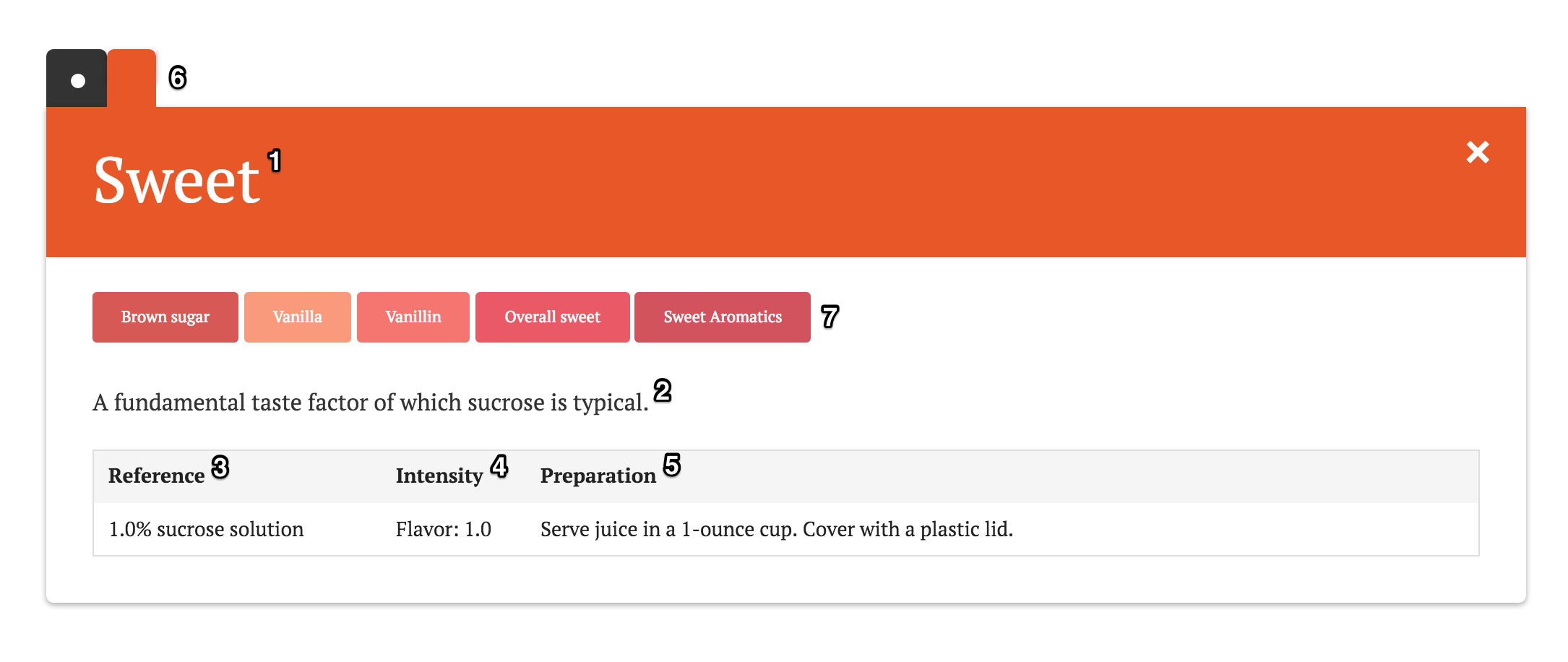How to use it?
The wheel’s design encourages the taster to start at the center, and work outward. The most general taste descriptors are near the center, and they get more specific as the tiers work outward. The taster can stop anywhere along the way, but the farther outward the taster works, the more specific the description might be. Read more.
When you click wheel it will show corresponding "flavor card". 
1. Attribute name: This is the descriptive name given to the sensory attribute (taste, smell, or mouthfeel) that sensory scientists determined are present in coffee over the course of developing the lexicon. The first edition of the World Coffee Research Sensory Lexicon contains 110 attributes.
2. Definition: Each attribute has a definition that clarifies and describes what the attribute name means.
3. References: For each attribute, references are provided that serve as the standard against which that attribute is measured. The above example has only one reference. But others might have two or three or even four. For example, the Smoky attribute has three references: three references for aroma (benzyl disulfide, wood ashes, and smoked almonds) and one reference for flavor (smoked almonds). References may be used to evaluate either flavor or aroma (or both), as indicated. Sometime the same reference is used for more than one attribute. For example, roasted peanuts are used as a reference for the attributes Peanut and Roasted.
4. Intensity score: Each reference is given an intensity score on a scale of 1 to 15, and is labeled as either an aroma or a flavor reference. The intensity score is the critical factor that makes the World Coffee Research Sensory Lexicon not just a descriptive tool but a measurement one—it allows evaluators to measure the amount of a given flavor or aroma attribute in a coffee sample. The intensity score allows evaluators to compare the strength of the attribute in the sample against the strength in the reference(s) and to assign the appropriate score to the sample.
5. Preparation instructions: Each reference includes instructions for preparation, including serving instructions. For example, it’s always preferable to use covered glass snifters for aroma references so that aromas don’t contaminate one another on the table. Following the preparation instructions will ensure that each reference represents the correct intensity.
6. Parent category located closer to the center. You can cick it.
7. Child category located closer to the edge. You can cick it.
Where Are the Defects?
See Arabica Green Coffee Defect Handbook for defects. Example (from SCAA Defects Handbook p. 4):
FULL BLACK
Effect on cup quality: Ferment or stinker taste, dirty, moldy, sour, phenolic taste.
Causes: Agricultural. Blackening results from over fermented pigment from micro-organisms.Source: presentation.